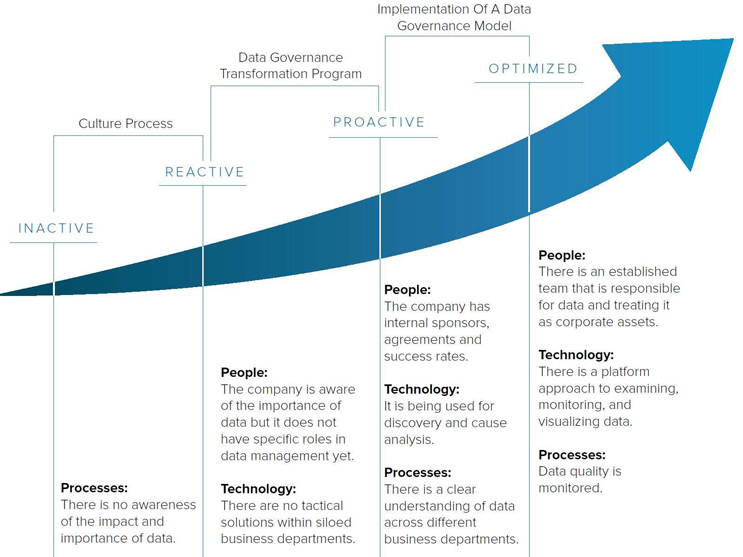The Water Utility Digital Journey — Which Stage Are You?
By Dr. Amir Cahn, SWAN CEO

A water utility’s digital transformation can face several different people, process, and technology complexities. What are the key ways to navigate this journey, shifting from reactive to optimized data management?
The Challenges
As water utilities juggle multiple agendas and priorities, adopting new technologies can take a back seat. The people mentality of losing control, project failure, or displaced jobs can lead to sentiments that “we have more important fires to put out” or “gaining everyone’s support is too time-consuming.” Another prevalent fear is the unexpected issues that new data could reveal.
From a process perspective, the digital transformation journey can be uncertain in terms of where to begin, data governance needed, and how to find the right partners. Within water utility departments, siloed operations can often create duplicative data efforts and conflicting strategies. Breaking these silos down demands a collective change in mindset and viewing data analysis as a core competency vs. liability.
In the realm of technology, utilities may lack the budget or personnel to adopt new solutions. Prevalent concerns relate to cybersecurity, data ownership, and introducing faulty solutions or erroneous data. Utilities can also be missing the tools or ability to effectively integrate data from different platforms.
The Digital Maturity Roadmap
While there is no one-size-fits-all solution, below is one helpful framework from the SDG Group to help guide organizations assess their current maturity level. Each stage can apply to water utilities with provided advice how to evolve their journey.
Inactive Stage
Water utilities have little or no digital presence. Data collection is manual, and there is limited connectivity between different systems. Thus, decision-making relies heavily on human intervention, making the process slower and less informed. To progress, utility companies should recognize the importance of digitization as a key business focus, establish a digital strategy at the executive level, and initiate pilot projects to investigate the value of implementing digital solutions.
Reactive Stage
Water utilities begin embracing digital tools in response to specific challenges or requirements. Basic automation is introduced for monitoring key parameters such as water flow, quality, and asset performance. However, data is only collected intermittently, and operations are still siloed. Problems are addressed as they arise with limited capacity for preemptive action or strategic planning. To advance, utilities should draw insights from industry counterparts and research, shift operations from traditional paper methods to digital platforms, and ensure that both customers and employees are well-versed in the utility’s direction.
Proactive Stage
Water utilities adopt a more forward-thinking approach. Remote sensors are deployed to collect real-time data on various aspects of the water or wastewater system. Network visualization is more widespread with utilities typically implementing SCADA, GIS, and hydraulic models. Predictive analytics using cloud services further anticipate potential issues, enabling the utility to take preventive measures. There are internal sponsors with measured success rates providing a clear understanding of data across different departments. To become optimized, utilities should ensure that projects are in harmony with both digital objectives and overall business strategy and explore more decision-support and automated solutions.
Optimized Stage
Water utilities are fully digitized with technologies incorporated across business and operations processes. There is a platform approach to monitoring, examining, and visualizing data. Decision-makers utilize advanced analytics such as AI, machine learning, and digital twins to automate monitoring and control. There is also a culture of continuous improvement with innovation ingrained in the organization. Utilities at this stage should continue seeking enhanced efficiencies through digital solutions and share best practices with industry peers.
Conclusion
Fostering a data-driven utility culture requires overcoming several difficult challenges such as internal resistance, siloed operations, and embracing innovation. To build trust amongst different stakeholders, there must be transparent communication and emphasis on the long-term benefits technology solutions will have on a utility’s existing priorities.
To bridge global utility challenges with collaborative innovation, we invite you to attend the SWAN 14th Annual Conference to be held in Vancouver from May 20-22, 2024. SWAN’s flagship event brings together senior utility managers, technology providers, researchers, consultants, regulators, and academics at the leading global, smart water event of the year.

